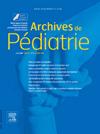Actual food consumption after a negative oral food challenge in children: A challenge after the challenge?
IF 1.3
4区 医学
Q3 PEDIATRICS
引用次数: 0
Abstract
Background
Unnecessary dietary eliminations may impair quality of life, affect children's growth, and negatively impact healthcare costs. Previous studies reported that around 11 % to 28 % of children continue a food-avoidance diet despite a negative oral food challenge (OFC).
Objectives
This study aimed to evaluate the actual consumption at home of the tested food after a negative OFC and the reasons reported by families in the case of persistent avoidance.
Methods and settings
A retrospective study was conducted in the Pediatric Gastro-Enterology and Pneumo-Allergology Departments of Robert Debré Hospital (Paris), involving patients who had a negative OFC. Data were collected from the patients’ medical files and supplemented by a telephone survey.
Results
101 families completed the telephone survey, corresponding to 129 OFCs with full data available. The tested foods were tree nuts for 29.5 % (38/129), milk for 28.7 % (37/129), and egg for 21 % (27/129). Persistent avoidance represented 17.1 % of the OFCs (22/129), and partial consumption 4.6 % (6/129). Consumption of the tested food was inversely correlated with child's age and length of avoidance period. Consumption was more frequent in the case of ubiquitous allergens (milk, egg). The main causes mentioned for non-consumption were family habits (72.7 %, 16/22) or the child's disgust for the tested food (54.5 %, 12/22).
Conclusion
A negative OFC does not always result in actual consumption of the tested food at home. These results underline the importance of performing an OFC as early as possible in the patient's life. Monitoring and supporting patients who have a negative OFC is key for successful consumption at home.
儿童口腔食物负挑战后的实际食物消耗量:挑战之后的挑战?
背景:不必要的饮食禁忌可能会损害生活质量、影响儿童生长并对医疗成本产生负面影响。以往的研究报告显示,约有 11% 至 28% 的儿童在口服食物挑战(OFC)呈阴性反应后仍继续避免进食:本研究旨在评估儿童在口服食物试验(OFC)阴性后在家实际食用试验食物的情况,以及在持续回避的情况下家庭报告的原因:巴黎罗伯特-德布雷医院(Robert Debré)小儿胃肠病科和肺炎过敏科开展了一项回顾性研究,研究对象为OFC阴性的患者。数据来自患者的医疗档案,并通过电话调查进行补充:101个家庭完成了电话调查,对应129名有完整数据的OFC患者。接受检测的食物中,29.5%(38/129)为树坚果,28.7%(37/129)为牛奶,21%(27/129)为鸡蛋。持续回避占 OFCs 的 17.1%(22/129),部分食用占 4.6%(6/129)。食用测试食物与儿童的年龄和回避期的长短成反比。食用无处不在的过敏原(牛奶、鸡蛋)的频率更高。不食用的主要原因是家庭习惯(72.7%,16/22)或儿童对测试食物的厌恶(54.5%,12/22):结论:OFC 阴性并不总是导致儿童在家中实际食用被测食物。这些结果强调了在患者生活中尽早进行 OFC 的重要性。监测和支持 OFC 阴性的患者是成功在家进食的关键。
本文章由计算机程序翻译,如有差异,请以英文原文为准。
求助全文
约1分钟内获得全文
求助全文
来源期刊

Archives De Pediatrie
医学-小儿科
CiteScore
2.80
自引率
5.60%
发文量
106
审稿时长
24.1 weeks
期刊介绍:
Archives de Pédiatrie publishes in English original Research papers, Review articles, Short communications, Practice guidelines, Editorials and Letters in all fields relevant to pediatrics.
Eight issues of Archives de Pédiatrie are released annually, as well as supplementary and special editions to complete these regular issues.
All manuscripts submitted to the journal are subjected to peer review by international experts, and must:
Be written in excellent English, clear and easy to understand, precise and concise;
Bring new, interesting, valid information - and improve clinical care or guide future research;
Be solely the work of the author(s) stated;
Not have been previously published elsewhere and not be under consideration by another journal;
Be in accordance with the journal''s Guide for Authors'' instructions: manuscripts that fail to comply with these rules may be returned to the authors without being reviewed.
Under no circumstances does the journal guarantee publication before the editorial board makes its final decision.
Archives de Pédiatrie is the official publication of the French Society of Pediatrics.
 求助内容:
求助内容: 应助结果提醒方式:
应助结果提醒方式:


